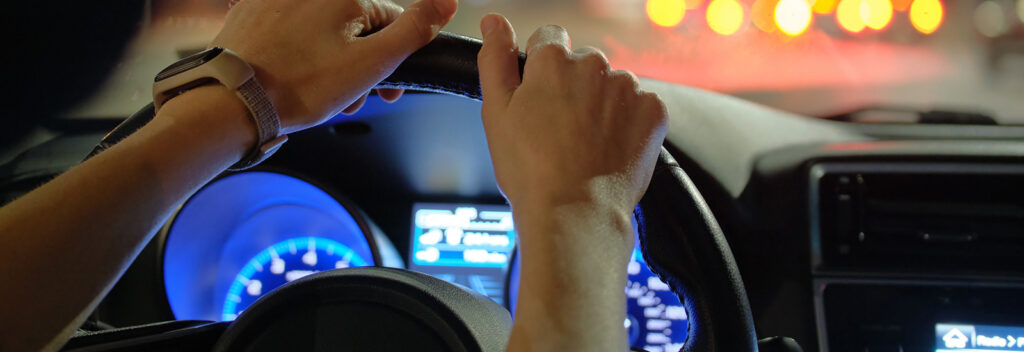
ORLANDO, Fla. (Apr. 3, 2025) – In 2023, over 40,000 people died in motor vehicle crashes in the United States, fueled by risky behaviors like speeding, impairment, and aggressive driving. Although this number has decreased from previous years, it remains high compared to pre-pandemic levels, underscoring the need for innovative approaches to improve the safety of our nation’s roads. AAA is committed to finding effective ways to encourage drivers to adopt safer behaviors behind the wheel and curb this unsettling trend.
“This research, with over 1,400 study participants, gauges what motivates individuals to change certain risky driving behaviors,” said Dr. David Yang, president and executive director of the AAA Foundation for Traffic Safety. “Finding ways to reduce these behaviors can positively impact traffic safety and reduce injuries and fatalities on our roads.”
Research shows that speeding, aggressive driving, and distraction contribute to a significant number of crashes. Efforts to change these behaviors often involve driver education, public awareness, and legislation. While these approaches can be effective, they often require significant resources and time to yield results, and the crash trends suggest that additional countermeasures are also needed.
Smartphone technology enables the measurement of dangerous driving behaviors, which could pave the way for remedies to help drivers improve their safety. Interestingly, this may already be happening through usage-based insurance (UBI) programs, which are typically used by insurance companies to offer customers incentives for safe driving. However, it is challenging to determine whether UBI programs truly improve safety, as only individuals who opt in are monitored.
To explore this issue further, The AAA Foundation for Traffic Safety examined whether providing feedback and incentives—typical of UBI programs—enhances driver safety. Researchers also explored whether targeted goals, either assigned or self-selected, lead to greater improvements.
The trial examined the use of handheld phones, speeding, hard braking, and rapid acceleration. Participants were divided into four groups, with different levels of feedback and advice over a 12-week period. All groups, except the observation group, could earn bonus incentives based on their overall driving safety.
- The Observation group – served as the control; their driving was monitored during this period, but they received no feedback or bonus incentive.
- The Standard Feedback group – given weekly feedback and advice via text messages on all behaviors monitored.
- The Assigned Goal group – focused on one specific behavior assigned to them and were given weekly feedback and advice via text messages on that one behavior.
- The Chosen Goal group – participants selected one behavior to focus on and set a goal for improvement; were given weekly feedback and advice via text messages on that goal.
The Results:
Among the three feedback groups, there were clear improvements in driver behavior:
- Up to a 13% reduction in speeding
- Up to a 21% reduction in hard braking
- Up to a 25% reduction in rapid acceleration
Surprisingly, the use of handheld phones remained unchanged. It is possible that the baseline safety scores provided to participants at the start of the study for this behavior led drivers to believe that they were being safer than they actually were—and therefore, there was less need for improvement.
Participants also reported how helpful the following tactics were in changing their behaviors:
- 67.4% – the potential to earn extra money
- 53.9% – weekly driving feedback via text message
- 45.8% – weekly dashboard (provided detailed driving information for the week)
Participants in the “Assigned Goal” and “Chosen Goal” groups also displayed higher engagement with the dashboard, which correlated to greater improvement in risky driving behaviors.
After the 12-week period, participants were monitored for an additional 6 weeks without any feedback or incentives to determine if their habits would persist in the absence of reinforcement. The study found that, generally, participants continued to drive more safely, indicating that they did so without receiving feedback or incentives.
“It’s encouraging to see that many individuals stuck with safer habits even after the study,” said Jake Nelson, AAA’s director of traffic safety advocacy. “This shows that positive reinforcement, not just punitive measures, can lead to safer driving habits that can save lives.”
AAA’s research shows that the kinds of feedback and incentives offered by UBI programs can improve driver safety across a range of behaviors. Developers of this technology can maximize the benefits of this tool by looking for ways to enhance participant engagement.
About AAA
Started in 1902 by automotive enthusiasts who wanted to chart a path for better roads in America and advocate for safe mobility, AAA has transformed into one of North America’s largest membership organizations. Today, AAA delivers exceptional roadside assistance, helps travelers plan their dream vacations and adventures, offers exclusive member discounts and benefits, and provides trusted financial and insurance services – all to enhance the life journey of our 65+ million members across North America, including nearly 58 million in the United States. To learn more about all AAA offers or become a member, visit AAA.com.
About The AAA Foundation for Traffic Safety
Established in 1947 by AAA, the Foundation for Traffic Safety is a nonprofit, publicly funded 501(c)(3) charitable research and educational organization. The AAA Foundation’s mission is to prevent traffic deaths and injuries by researching their causes and by educating the public about strategies to prevent crashes and reduce injuries when they do occur. This research informs the development of educational materials for drivers, pedestrians, bicyclists, and other road users.
